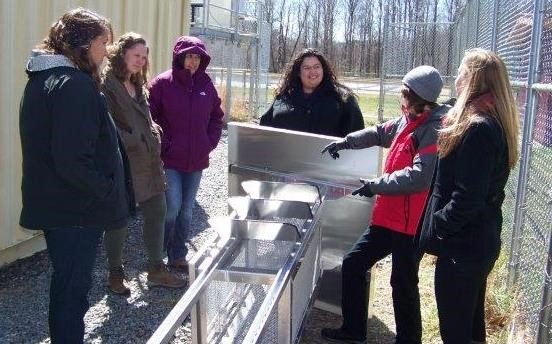EPA’s Air Sensor Toolbox Offers New Tools for Community-led Air Monitoring
Published February 26, 2018
EPA has developed two new tools for the Agency’s Air Sensor Toolbox that enable citizen scientists and others to more effectively collect and interpret air quality data in their communities using low-cost air sensors.
The new tools are an instruction guide, How to Evaluate Low-cost Sensors by Collocation with Federal Reference Monitors, and the Excel-based Macro Analysis Tool for Air Sensor Data, which allows users to compare data from low-cost monitors to the data being collected by regulatory-grade air monitors. By comparing low-cost sensors with regulatory monitors that have undergone rigorous review and approval by the EPA, citizen scientists will gain a better understanding of the reliability of the data they collect.

Researchers developed the tools to support a community-led air sensor evaluation project initiated in fall 2016. During the year-long project, EPA partnered with two North Carolina-based groups – Clean Air Carolina, a clean air educational outreach organization, and the Eastern Band of Cherokee Indians, a tribal nation. Participants evaluated the performance of selected low-cost sensors by comparing them to federal reference (or equivalent) method monitors, which are the gold standard used to implement the nation’s air quality regulations.
“Feedback from our project partners, including citizen scientist volunteers, was invaluable since they are the target audience for these tools,” says Teri Conner, an EPA scientist who was on the research team that developed the tools. “Their feedback helped us see the tools from the non-expert perspective.”
As low-cost air sensors become more accessible and easy to use, individuals and community groups are looking for guidance on how to operate the sensors effectively and interpret the collected data. EPA’s air sensor research is helping citizen scientists and communities by providing the tools and resources needed to learn about air sensor technology, how to conduct a citizen science air monitoring project and how to understand results.
Katie Tiger, supervisor of the Eastern Band of Cherokee Indians’ Air Quality Program, says she believes the guide and analysis tool they evaluated will help communities consider the accuracy of low-cost sensors. “Now that community-based science--citizen science--has become more popular, it’s nice to have something that explains how to collect more viable data using low-cost sensors,” she says.
Low-cost air sensors can be used by states, communities, tribes, and industry to identify air quality concerns and take action to reduce human exposure to air pollution. These low-cost technologies provide more cost-effective ways to monitor air quality and help the public learn more about air quality in their communities.
